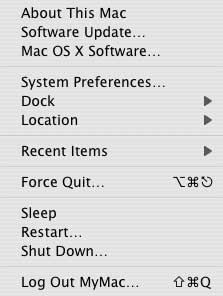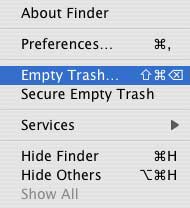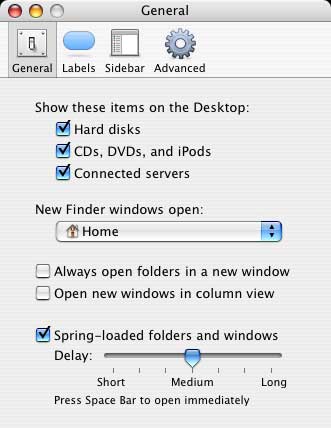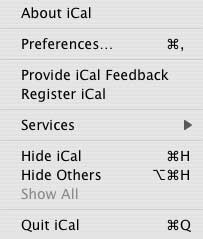
When people in the Mac world use the term “Switcher” they usually are referring to those switching from a Windows computer to the Mac. Well, there is another, lesser talked about, group of “Switchers” out there. These are those who are just now making the change to Mac OSX. Whether it is Jaguar, Panther, Tiger, or earlier, there are a few changes to be aware of. OK more than a few, but that would be an entire book. I’m going to cover some of the more obvious and everyday tasks that might be different. Consider this a jump-start for OSX.
First there is the Apple Menu. It is still in the left hand corner, but more than just the color of the Apple logo has changed. The Apple Menu is no longer a customizable menu that can be loaded with applications and folders. Now the menu is for basic functions of the computer: Logout, Restart, Shutdown, System Preferences, About This Mac, etc.

Did I just say you go to the Apple Menu to shutdown the computer? Yup. No more Special menu in the Finder. Those items have been relocated. Besides those mentioned above, emptying the trash is now done in the new Finder menu.
That’s right, the new Finder menu. In OS9 the finder menu was on the top right of the menu bar. Basically, it was a place to switch between applications. Now, the Dock handles these tasks (see my article “Macspiration-Customize Your Dockâ€). The Finder menu is now an application menu and is located next to the Apple Menu. It is only visible when you are on the Desktop. The Finder is now an application that is always running. It can be relaunched from the “Force Quit†menu (a good idea if things start getting wacky).

Besides emptying the trash from the Finder Menu, you can customize the Finder through Preferences. Several options like removing the warning when you empty the trash, customizing labels, setting spring-loaded folders, and more can all be set here.

Speaking of the Trash. Where did the trash can go? Instead of being located in the lower right of the screen, it is now located in the dock. The trash still works the same, you place files in it to delete them and you empty it. You still drag CD’s and other media to it for ejecting.

Let’s go back to the Apple Menu for a moment. Did you notice something missing? No more control panels and extensions! The cause of many OS9 startup crashes. Items from the control panel are now located in System Preferences, which is in the Apple Menu. From your desktop picture to the date and time, you can find it there. No more need to worry about extensions conflicting on boot!
Moving along, some other important changes from the Finder, and other applications, are keyboard shortcuts. If you are like me, you use keyboard shortcuts all of the time. Well, Apple went and changed several of them. No longer will APPLE-N make a new folder. You need to use APPLE-SHIFT-N. APPLE-N will open a new window in the finder. APPLE-M no longer makes an alias, that is APPLE-L. APPLE-M will minimize a window to the dock. Those are just a few of the new shortcuts. To find out more check the menus from the finder and different applications. The key combination is on the right of the menus.
One final, and possibly one of the more important changes, is how to quit an application. Instead of going to the File Menu, you now go to the Application Menu (as described above when discussing the finder). Every Application now has it’s own menu when it is running. In that menu you will find Preferences (no longer in the Edit menu), the “About…†, the option to quit that program, and other choices.

As I said at the beginning of this article, this is more like a Jump-Start for OS9 to OSX switchers, and not the definitive guide to OSX. These are just a few “heads up” items I think one should know when making the switch. Are there others that could be listed? Sure. The windows look different, you control windows a little differently, you can change the size of your icons on your desktop, etc. Several of these can be found in older articles of Macspiration, and I am not going to repeat them here.
A person switching from OS9 to OSX probably knows the basics of working on a Mac. The best way to learn OSX is to explore this new operating system, and have fun doing it! If that is not enough, visit your local bookstore. There are plenty of great books on learning OSX. In the meantime, enjoy the new look, and the new effects, and especially fewer crashes (bye bye black bomb!).
Think I left something out that is really important? List it below this article in the comments section, or email me, I’d love to hear from you.

Leave a Reply
You must be logged in to post a comment.